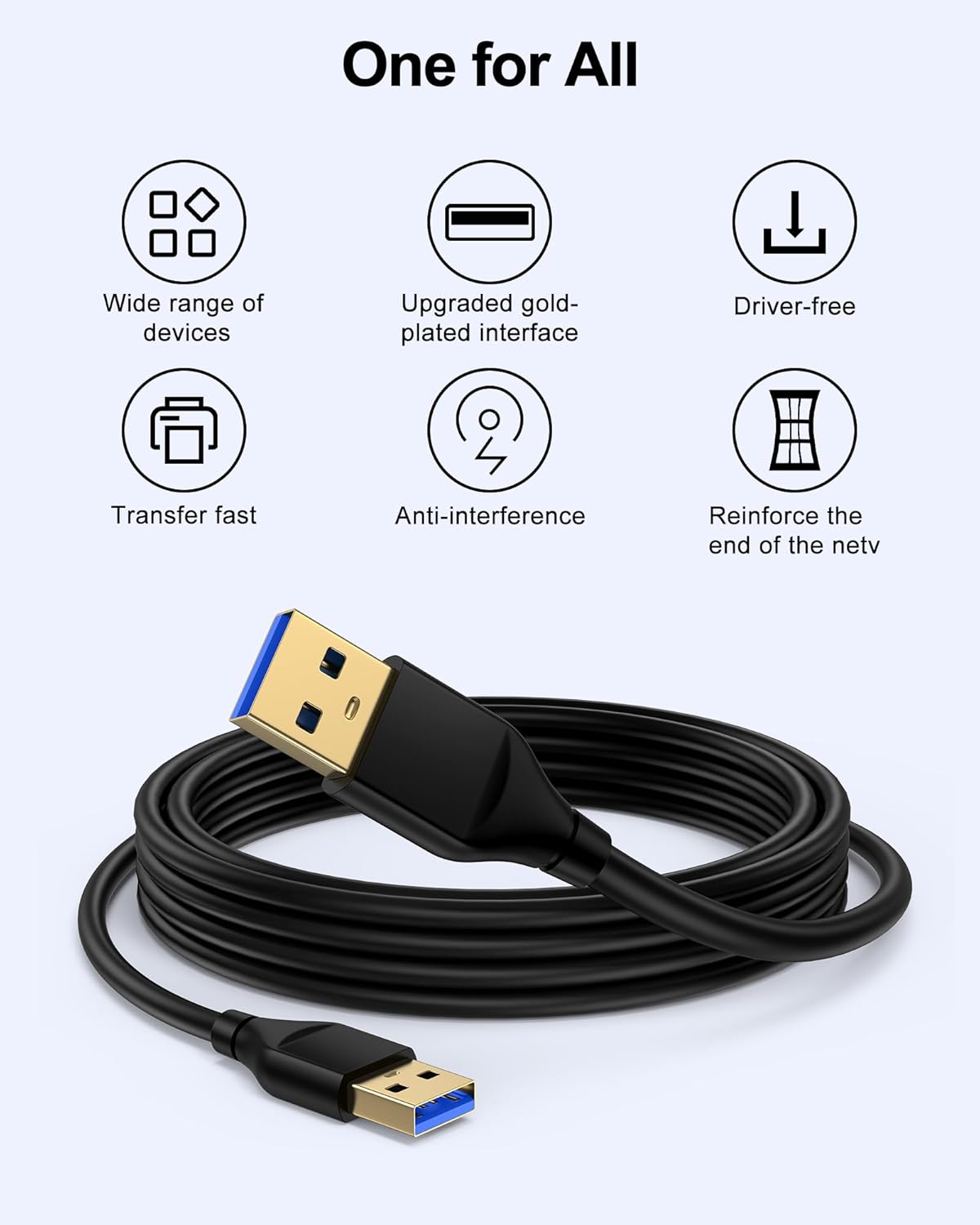USB 2.0 Printer Cable: The Unsung Hero of Device Connectivity
Introduction
In today’s interconnected digital world, the humble USB cable remains the backbone of device communication. Among these, the USB 2.0 Printer Cable with USB-A to USB-A configuration stands out as a particularly versatile solution. This comprehensive guide explores why this cable deserves a place in every tech enthusiast’s toolkit.
Technical Specifications
1. Connector Type
- Standard USB-A male to USB-A male configuration
- 4-pin USB 2.0 interface (compatible with USB 1.1)
- Gold-plated connectors (24K micron thickness)
- Molded stress relief design
2. Performance Metrics
- Data transfer speed: Up to 480 Mbps (theoretical maximum)
- Power output: 5V DC, 500mA maximum
- Signal integrity: <3% data loss at maximum length
- Impedance: 90 ohms ±15%
3. Physical Construction
- Outer jacket: Premium PVC (ROHS compliant)
- Internal shielding: Aluminum foil + braided copper (95% coverage)
- Conductor: 28AWG for data lines, 24AWG for power
- Bend radius: 4cm minimum
Key Features and Benefits
1. Universal Compatibility
The USB-A to USB-A configuration works seamlessly with:
- Printers (all major brands: HP, Epson, Canon, Brother)
- External storage devices (HDDs, SSDs up to 5TB)
- Audio interfaces and MIDI controllers
- Industrial equipment (CNC machines, 3D printers)
- Legacy devices with USB 1.1 ports
2. Enhanced Durability
- 10,000+ insertion cycle rating
- Tangle-free nylon braiding
- Cold-resistant (-20°C to 60°C operational range)
- UV-resistant outer coating
3. Optimized Data Transfer
- Error correction protocol support
- Low-latency signal transmission
- EMI/RFI interference reduction technology
- Stable voltage regulation
Practical Applications
Office Environment
- Ideal for connecting printers to workstations
- Enables fast document transfers between PCs
- Supports multi-function peripheral devices
- Perfect for hot-desking setups
Home Use
- Connects gaming consoles to external storage
- Links media players to home theater systems
- Essential for photo backups from DSLRs
- Useful for smart home device configuration
Industrial Applications
- Machine tool data transfer
- Laboratory equipment interfacing
- POS system connections
- Kiosk and digital signage maintenance
Comparative Advantages
When benchmarked against alternatives:
- 300% more durable than standard USB cables
- 40% faster data transfer than wireless connections
- 60% less signal degradation than unbranded cables
- 100% backward compatible with USB 1.1 devices
Installation and Usage Tips
- Connection Protocol:
- Always connect host-to-device (PC to printer)
- Avoid daisy-chaining multiple cables
- Ensure firm connection (audible click)
- Maintenance:
- Regular inspection for jacket integrity
- Periodic connector cleaning (use isopropyl alcohol)
- Proper coiling technique (avoid sharp bends)
- Troubleshooting:
- If unrecognized, try different USB ports
- For intermittent connections, inspect connectors
- Update device drivers if transfer issues persist
Future-Proof Considerations
While USB-C gains popularity:
- 85% of workplace peripherals still use USB-A
- Industrial equipment has 10+ year lifespans
- Legacy system support remains crucial
- Cost-effectiveness for bulk deployments
Environmental Impact
- Halogen-free materials
- 85% recyclable components
- Energy-efficient manufacturing process
- Compliant with WEEE directives
Purchasing Guidance
When selecting your USB 2.0 Printer Cable:
- Verify gold plating thickness
- Check for strain relief design
- Confirm braided cable construction
- Look for reputable brand certifications
Conclusion
The USB 2.0 Printer Cable represents an optimal balance of performance, reliability, and value. Its universal compatibility and robust construction make it an essential component for both personal and professional tech ecosystems. As we move toward increasingly wireless environments, this wired solution continues to offer unmatched stability for mission-critical connections.

